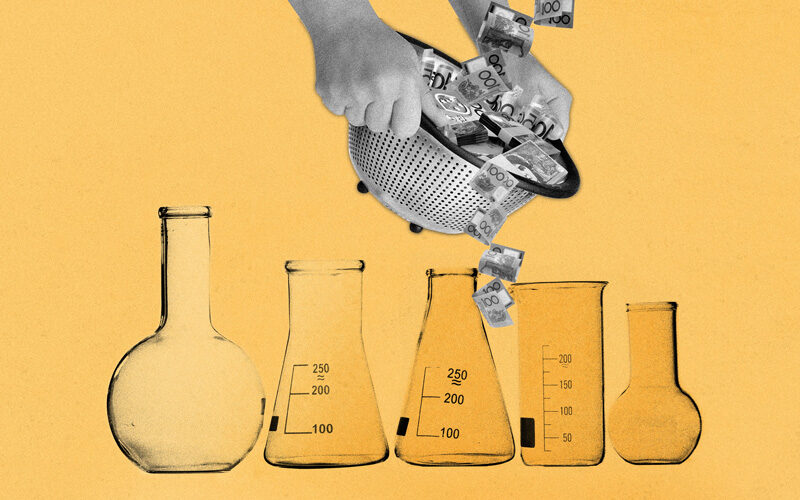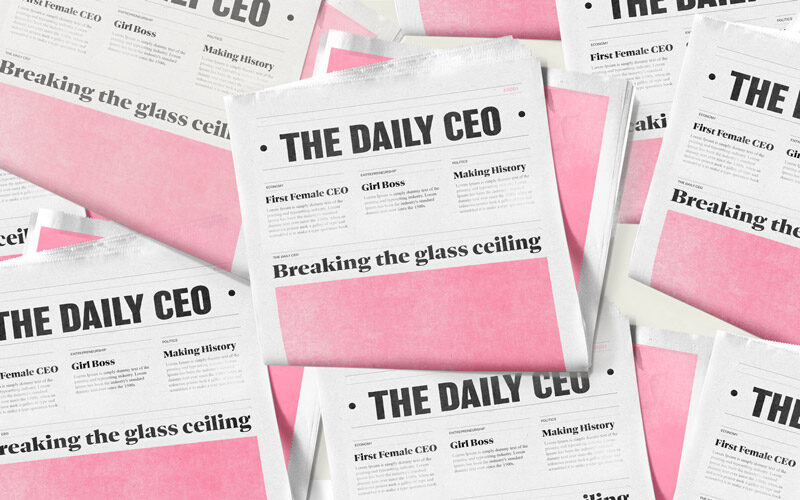Australia is in danger of becoming a land of missed opportunity.
We have some of the best universities in the world. We were frontrunners in creating a 99% immune response COVID vaccine. We’re just starting to churn out startup unicorns that are hitting valuations in the tens of billions. Our tech-scene success has put Australia on the innovation map.
But the hype overshadows a growing issue: the disconnect between academic research and the private sector.
It’s not unfair to say academics and the corporate world work in silos. A severe lack of ‘knowledge commercialisation’ is inhibiting the development of sophisticated exports that could create jobs, raise salaries, and reboot our economy post COVID.
What is knowledge commercialisation?
You might’ve heard of ‘knowledge exchange’, ‘research commercialisation’, ‘research translation’, or ‘tech transfer’.
All of these terms refer to the exchange of knowledge between academics and non-academics. It’s essential for getting cutting edge, highly advanced, and esoteric knowledge discovered in universities into the hands of people who can do something useful (and profitable) with it.
But this is not an openly flowing channel. Boundaries and bureaucracy are plugging the dam.
What’s the problem?
The problem is that tech transfer is not happening nearly as efficiently as it should. Entrepreneurship and academia are so far adrift from one another that great ideas are falling through the cracks, shelved, or abandoned as a result of conflict. Australian consumers and the economy at large are suffering as a result.
Education minister Alan Tudge has called for university students, graduates, and researchers to take ‘their ideas from the lab to the market’. He’s proposing an overhaul of IP laws to alleviate the bureaucratic obstacles currently standing in the way.
Why the drastic measures?
Current IP laws mean that university-industry collaborations are fraught with politics, conflict, and a lack of clarity on who the final decision-maker is.
There’s also a cynicism at play within university culture.
Universities reward ideas, models, and inventions that benefit society, the economy, and the environment – as they should. But product development is a less trodden path for scholars.
Many share a sentiment of doing good and making a difference. Their motivation is less financial, and if it were, they’d be in the wrong place. Lecturers and researchers are notoriously underpaid, frequently living off grants and fighting for tenures. Even temporary positions come with brutal competition. There’s a certain “hush hush” attitude around money and the express pursuit of it.
Secondly, publication volume and quality is closely linked to prestige. The more peer-reviewed and field-leading theory published, the higher the university’s international renown. The higher the renown, the higher the quality of international students it attracts. The higher the student calibre, the more the university is able to climb global rankings, while increasingly relying on those international students as its biggest source of revenue.
And so the focus remains on publication, not product.
Stagnation in the Australian export economy
The Australian economy is something of a victim of its own success. Having relied on digging things out of the ground for decades, almost our entire export profile remains physical. But we can’t rely on gas, coal, and metals forever. Our climate is changing, and we as a nation risk getting left behind if we don’t bolster our knowledge economy.
In 1990, PM Bob Hawke said: “No longer content to be just the lucky country, Australia must become the clever country.”
Thirty years on, Bob would be dismayed. Harvard’s masterful Atlas of Economic Complexity puts Australia as the 8th richest economy in the world. But on the Economic Complexity Index (ECI, which measures variation in our exports), we are a woeful 86th out of the 133 countries indexed. For a beautiful visual representation, take a look at our ‘exports basket’ compared to that of number one ranking Japan.
America is at 11th position on the ECI with the UK cosying up at 12th. Popular Aussie sentiment considers these nations our peers. But the numbers present an alarming contradiction.
The university revenue model
There’s also the skepticism around whether increased research commercialisation actually translates into more revenue for universities.
Seeing technology transfer as a money maker is a common rhetoric within universities. But there are people – namely technology transfer managers – whose job it is to push the agenda. In truth, few technology transfer offices profit or even break even. Because profit is not the purpose of technology transfer.
The “tech transfer = profit center” rhetoric is a misunderstanding of its fundamental purpose. It’s not about creating cash flow. It’s about having the inventive output of brilliant researchers incorporated into actual products, rather than languishing unused on a shelf or in abandoned volumes of notebooks.
It’s a core and inevitable part of university profit systems to recruit more students and bring them back for further degrees. The market is glutted with postgrads and PhDs, educated to the hilt, but with inadequate career or research opportunities to accommodate them.
The conundrum isn’t limited to Australia. 9 years ago, a report from the US National Academies called for ‘a restructure [of] doctoral education to… shorten time-to-degree and strengthen the preparation of graduates for careers both in and beyond the academy. Emphasis should be on student success and on preparing doctoral graduates for 21st century careers rather than on maximising students’ usefulness to professors and their grant-supported research.”
Again, the problem has been recognised, but little has changed.
Overseas students and the brain drain
International students contribute significantly to our economy. They make up 37% of our R&D workforce. They play a role in many world-changing fields including vaccine development, agricultural advancement, and renewable energy research.
But there are caveats to their contribution. One, when certain global pandemics shut down international travel, a huge portion of the overseas revenue universities rely on plummets out of the balance sheet. With border closures potentially extending into mid-2022, the $53 million allocated to universities affected by them is little more than a band aid.
A more perennial issue is that international students don’t always stay. The resultant “brain drain” means foreign students are Australia’s fourth biggest export after iron ore, coal, and gas.
Dwindling job opportunities mean we are also losing local students, too. Australian-born PhD candidates are leaving our shores to seek opportunities elsewhere in the world.
Thirdly, there is a harmful sentiment pervading corporate Australia: that university graduates are not practical or pragmatically-minded enough to be of value in their operations. In the face of this dismissal, it’s no wonder hardworking and highly capable young people are looking elsewhere.
What’s the solution?
University accelerator programs
A far cry from 10 years ago, almost every major university in Australia now has its own entrepreneurial/accelerator program. These programs are not only where the fundamentals of startup success are taught, but are designed to catalyse a startup’s journey out of an institutional environment and into their next phase of development (i.e. commercialisation).
Melbourne-based sustainable construction firm Curvecrete, found its feet at The University of Melbourne, where the uni’s research impact accelerator TRAM (Translating Research at Melbourne) helped founders Warren Rudd and Daniel Prohasky execute their commercialisation plans.
Rudd says:
We’ve really valued their commercial intellect. They’ve been helping us work through fundraising options, including grant applications and stress-testing some of our strategic plans. We’re very excited to…further develop our sales funnel and identify other people we should be talking to.
Sectors like construction especially benefit from these connections, being both notoriously under-innovative and highly risk averse.
Another Melbourne-based startup, Hearables 3D, emerged from Swinburne University of Technology. The aural aid technology enables audio manufacturers to remove CAD labour and software costs and speed up production.
Founder and CTO, Dr. Phil Kinsella says:
…towards the end of the research and when the results were showing promise, we were able to acquire seed funding through Swinburne Ventures, which allowed the research to gain a new life as a commercial entity.
Operational VC
Operational VCs do more than provide funding, facilitate network connections and assist with operational strategy. They help those fresh out of lifelong education find their feet in the corporate world. Universities are not easy, but they’re familiar. Students learn how to speak and interact in academic scenarios, small classes, and group presentations. Many are not versed in the social demands of a corporate boardroom.
Following success at university accelerator programs, both Curvecrete and Hearables 3D graduated to Skalata Ventures in order to scale their respective businesses.
Government Grants
Government grants and incentives are also emerging to address the commercialisation funding problem. The Federal Government’s Accelerating Commercialisation grant is part of the Government’s Entrepreneurs’ Programme, which has provided 551 grants worth more than $270 million to Australian businesses since it was established in 2014.
Curvecrete last year used the grant to scale commercialisation of its robotic concrete mould by establishing a dedicated production facility.
What the future looks likes
Research is not for the faint of heart. In seeking to solve the as-yet-unanswered, you need relentless drive and self belief, especially when the very nature of research leads you down multiple incorrect paths. You have to be driven by the pursuit and love of knowledge.
The researchers prepared to go one step further, to take their work beyond the lab and influence the world around them, are the kind of people we need to nurture and support.
Australia needs to bridge the valley of death between university and the ‘real world’. The three-pronged attack of university accelerator programs, operational venture capital and government grants, might just present the solution.











